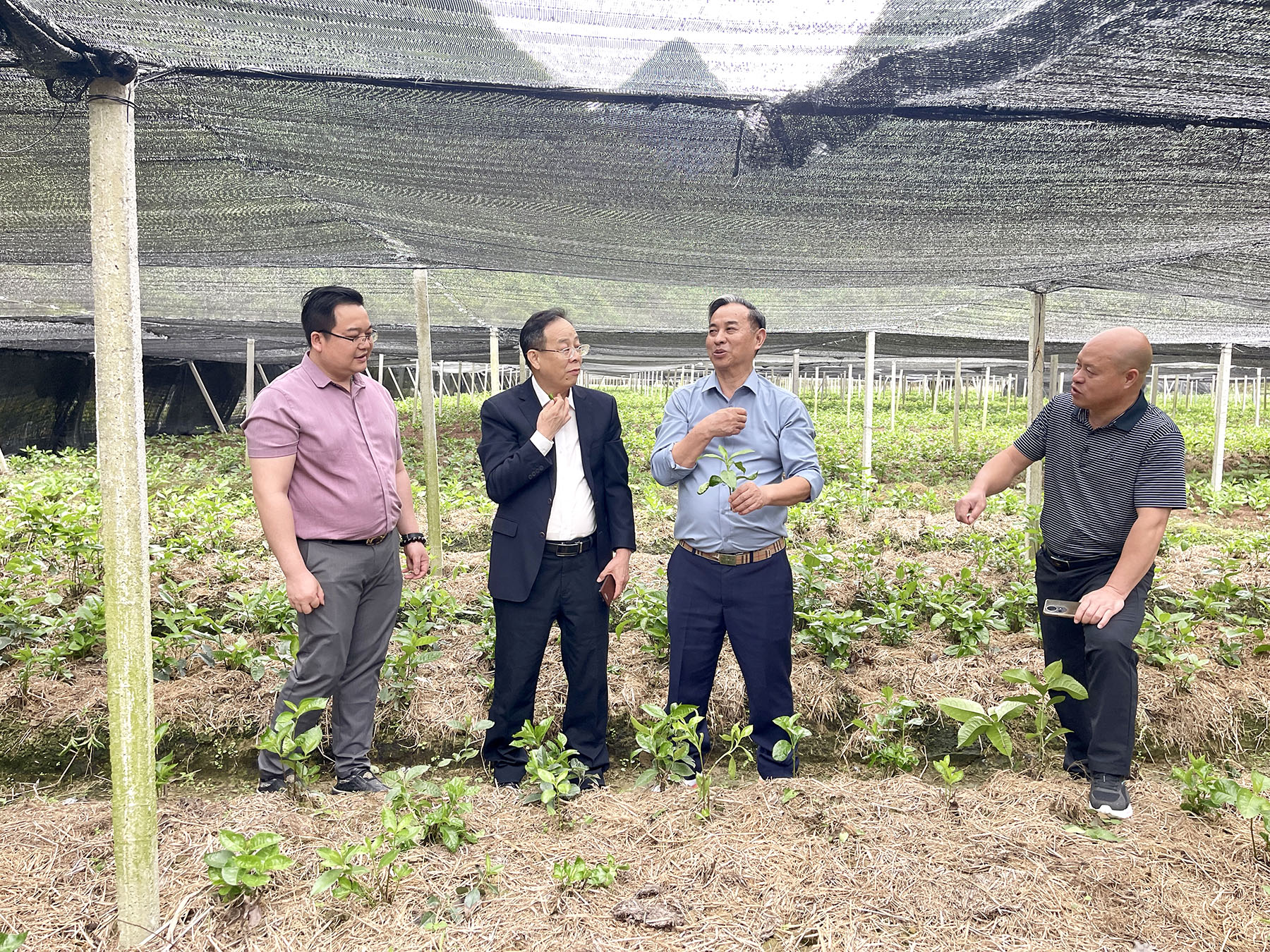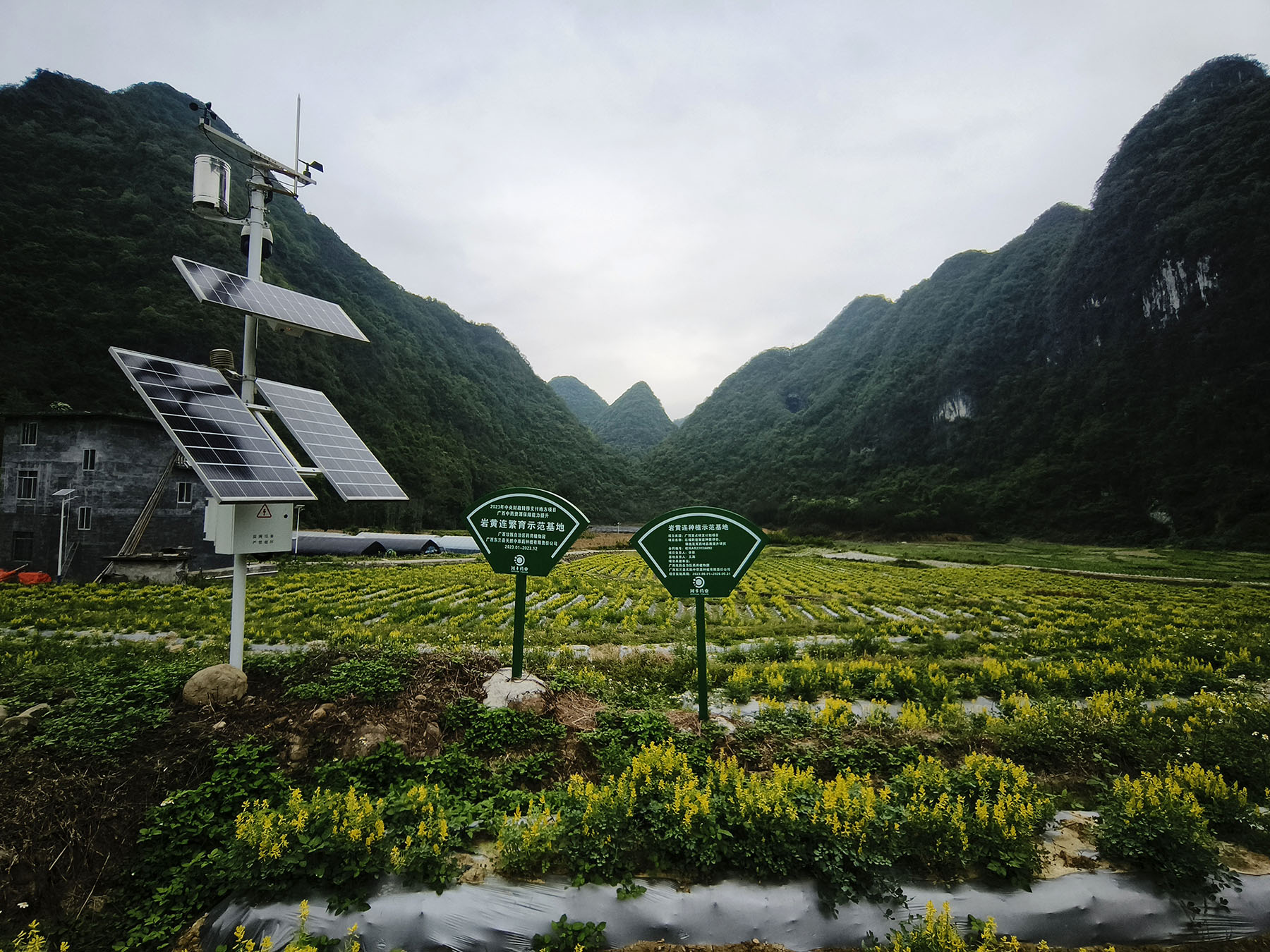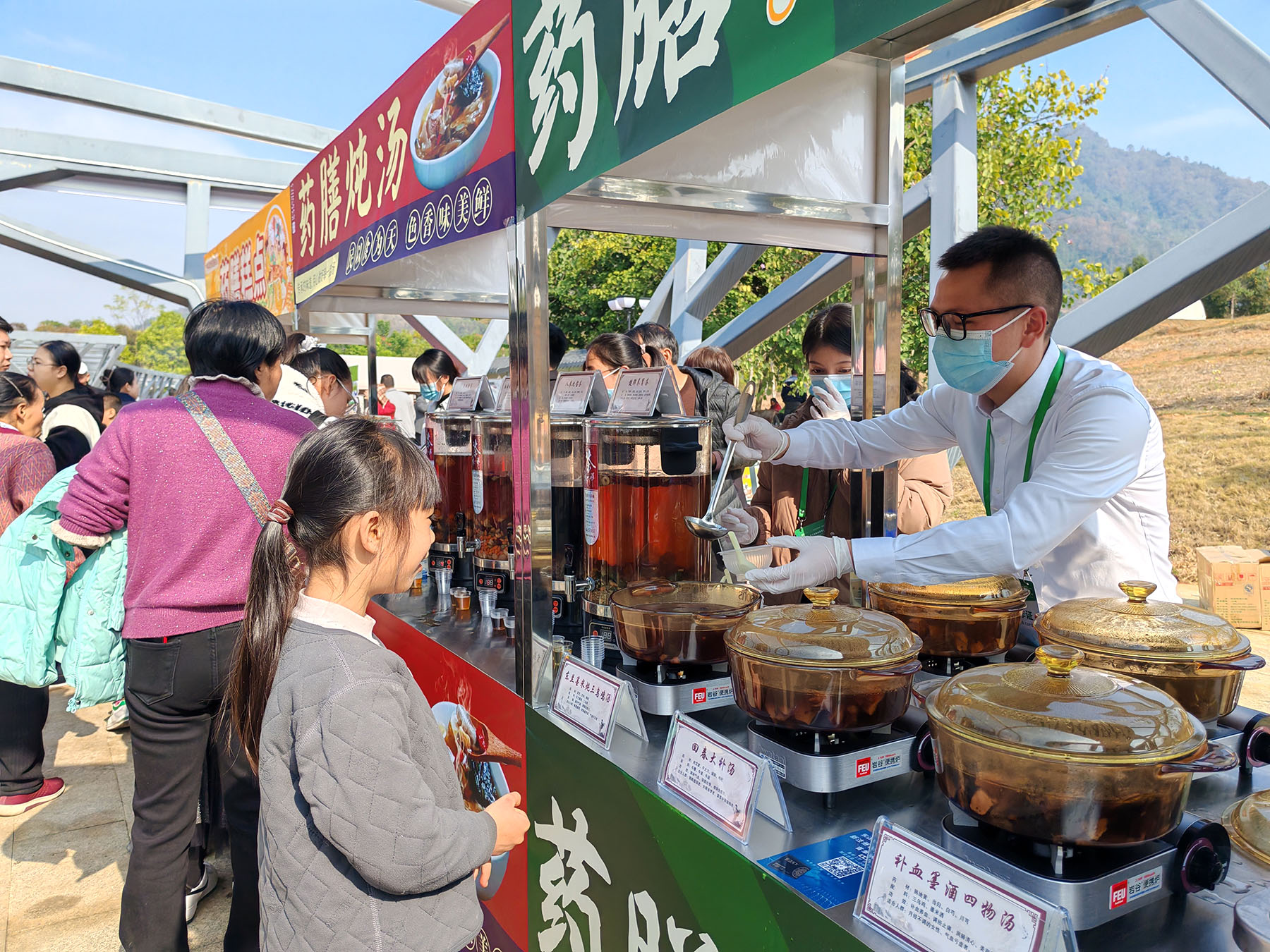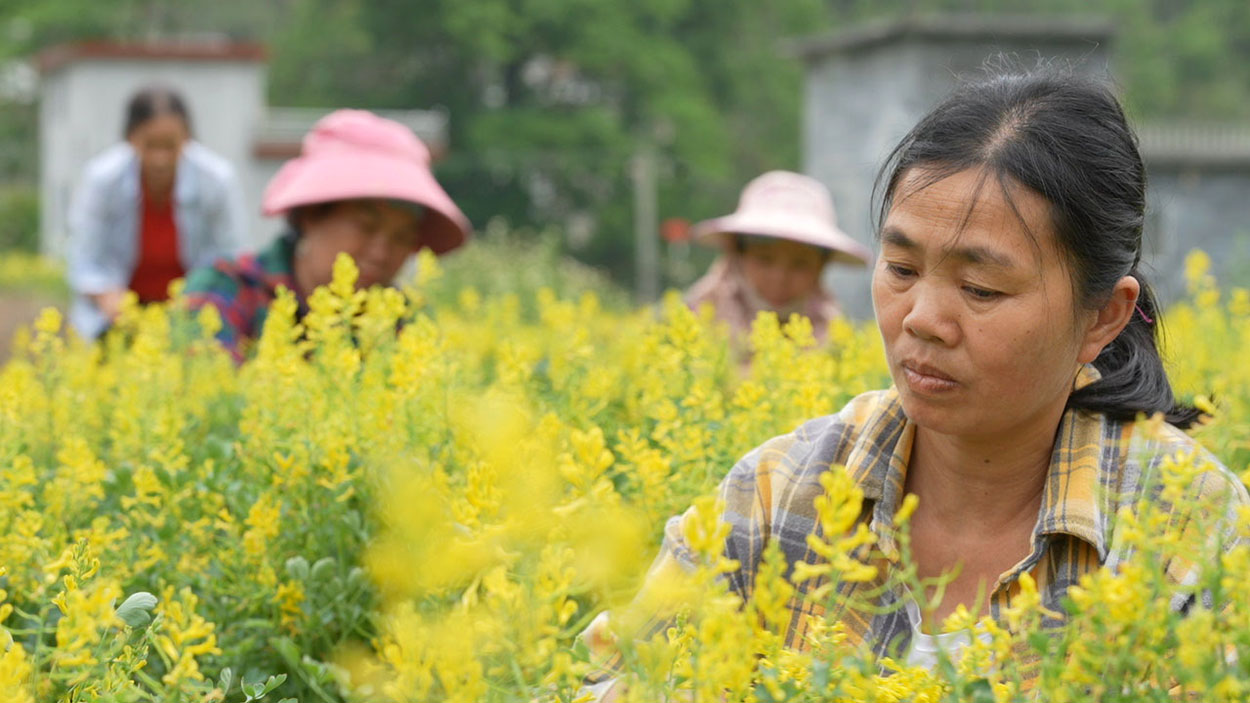Innovative health teas not only benefit patients, but also the villages and people where the ingredients are planted, Yang Feiyue reports.

At a newly opened herbal tea stall tucked inside Fuwang, a traditional Chinese medicine clinic in Liuzhou, Guangxi Zhuang autonomous region, Li Rongjie focuses intently on measuring out herbal ingredients ranging from slices of astragalus plant root and sun-dried ginseng to goji berries. Li mixes and matches them in various portions intended for such effects as boosting immunity and aiding sleep.
"I am brewing two types of tea, and each blend contains many herbs. The formulas are provided by the doctors in the pharmacy," Li, in his 20s, says.
Once he finishes preparing the raw materials, he carefully simmers the Chinese herbs. "After bringing them to a boil, they need to cook for at least another one to two hours for the best concentration," he says.
The TCM tea has attracted many health-conscious customers of different ages.
READ MORE: Youths embark on journey to discover secrets of TCM
Tang Huitian, founder of the TCM hall, says that these innovative beverages are all inspired by classic TCM prescriptions, such as those from the 16th-century encyclopedic book on herbology Compendium of Materia Medica.
"They preserve the medicinal efficacy of the ingredients while appealing to customers' flavor preferences," Tang notes.
Tang, who has practiced TCM for about four decades, says he notices the increasing popularity in TCM among modern consumers and works with Donglan county in Hechi city to grow special herbs to satisfy market demand.
A four-hour drive from Tang's facility, swathes of meadowrue corydalis root stretch freely across plots of land surrounded by mountains in Hongli village in Donglan. The herb is known for easing inflammation.

Once a battleground for the Red Army in the 1920s and '30s, this land is now redolent of medicinal herbs grown by ecological farming.
Huang Zhiying, a village official who oversees the TCM plantation, points out that a lot of knowledge and care goes into every step.
The journey begins around June every year, when the seeds are carefully dried and sown. It takes nearly a month for the seedlings to grow tall enough for the next critical phase — transferring them into nutrient cups.
"Seedlings are very delicate," Huang notes. "Sometimes, even after a week, you barely see any growth. It can take one or two months before they really start to come up," she explains.
This early stage happens inside specially prepared seedling sheds, where conditions like sunlight and temperature are carefully controlled — a necessity for the fragile young plants.
"Seedling cultivation isn't something you can rush. Without proper shelter and care, it simply won't work," she adds.
Around September or October, the mature seedlings are ready to be transplanted into the fields where the soil has to be plowed in advance, raised into ridges, covered with film, and then perforated for planting.
"We raise the soil into rows for better root development and make sure the excess water can drain through the small ditches we dig," Huang explains.

An irrigation system runs through the fields using a shared pipeline to deliver clear water or nutrient solutions, depending on the plants' needs.
After planting, farmers must continuously monitor soil moisture, fertilize appropriately, and protect the young plant from pests and harsh weather. The entire cycle, from seed to harvest, stretches more than half a year.
Yet, most villagers deem the toil as a blessing.
Wang Xiuyu, in her 50s, began working in medicinal plant cultivation around 2019, when the opportunity first arose.
She recalls that before the introduction of medicinal herb farming, the villagers mainly grew rice, which only provided seasonal income.
After the rice harvest, there was not too much other agricultural activity, and fields often lay fallow due to water shortages and unsuitable weather conditions.
Many villagers, including Wang, had to leave home to find temporary jobs, leading to temporary family separations.
The arrival of the plantation brought a new source of stable income. Wang estimates she can earn around 10,000 to 20,000 yuan ($1,380-$2,760) annually from it.
As soon as the meadowrue corydalis root is harvested in May, the villagers begin planting rice, says Wei Zhongfu, a senior expert in agricultural science.

The base adopts a "herb-grain "rotation model — the meadowrue corydalis root is sown in November and harvested by May, after which the land is immediately returned for rice cultivation — seamlessly transitioning from medicinal herbs to staple crops.
"This model effectively doubles landuse efficiency," Wei says.
Additionally, the loose soil and ample nutrients left behind by the herbal crops help repel pests and crop diseases and increase yields.
Meadowrue corydalis root is just one among many other herbs that have thrived in the village.
With a forest coverage rate exceeding 86 percent, a warm, humid climate, and selenium-rich soil, Donglan is home to more than 768 species of medicinal herbs, including highly prized varieties.
"Leveraging these natural advantages, the county is committed to the principle that lucid waters and lush mountains are invaluable assets, positioning TCM as a key pillar for development," says Pan Huakai, deputy head of the county.
In recent years, Donglan has adopted a three-pronged strategy combining ecological cultivation, intensive processing, and cultural tourism focused on health preservation.
Under the guidance of the Three-Year Action Plan for TCM Industry Development (2023-25) issued by the county government, Donglan rolled out a series of policies to support the industry, from special funding to a full supply chain system.

It is expanding into wellness tourism by creatively blending local agricultural products such as black glutinous rice and chestnuts with traditional medicinal herbs. The county has developed over 200 medicinal dishes and seven wellness teas, achieving a total output value exceeding 10 million yuan, Pan says.
The county has welcomed approximately 867,100 visitors, generating 940.8 million yuan in tourism revenue in the first quarter, according to county authorities.
"The environment here is ideal, with abundant mountains and dense forests. The climate is favorable, often shrouded in mist, creating natural conditions remarkably similar to the wild. As a result, the medicinal herbs we cultivate grow in an environment similar to their natural habitat," explains Tang, the TCM hall founder, of his decision to build TCM plantations in the county.
ALSO READ: Bringing TCM to the modern screen
To date, every species the plantation grows has a guaranteed demand from a partnered company, and farmers' incomes are secured through contract pricing, says Tang.
"Once our base matures, we aim to expand this model to other areas, encouraging farmers to utilize their idle forest lands for medicinal herb cultivation and supporting rural vitalization," Tang says.
Tang expects production and sales will continue to grow as more well-known TCM brands, like Tongrentang, will come on board.
Contact the writer at yangfeiyue@chinadaily.com.cn


